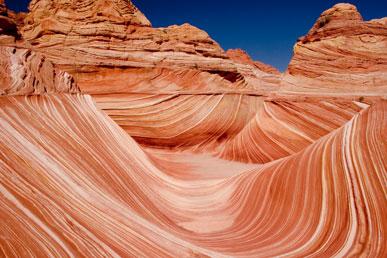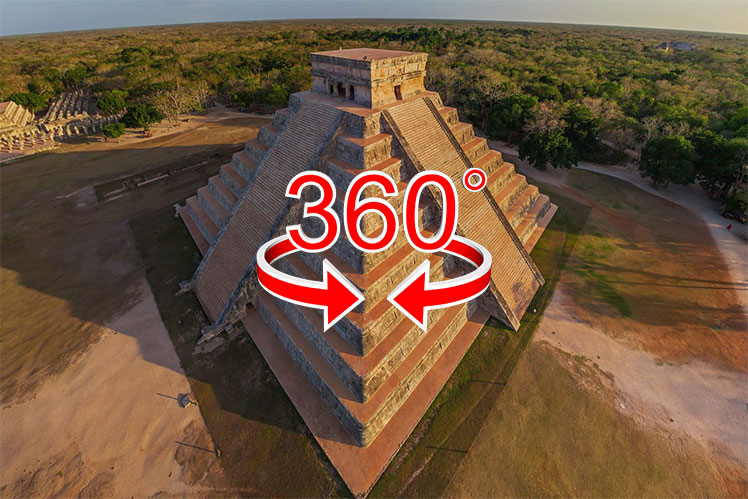
Many great civilizations have existed on our planet; they all made one or another contribution to the history and culture of mankind. Among the most famous are the Maya, who created a unique writing system, art, architecture, mathematical and astronomical systems, and then disappeared without a trace.
In several countries: Mexico, Belize, Guatemala, Honduras, outstanding architectural monuments of the Maya have been preserved. Today we will take a virtual trip to the ancient city of Chichen Itza in the north of the Yucatan Peninsula – this is one of the most popular attractions in Mexico.
☛ Go straight to the virtual panoramas of the Mayan pyramids in Chichen Itza
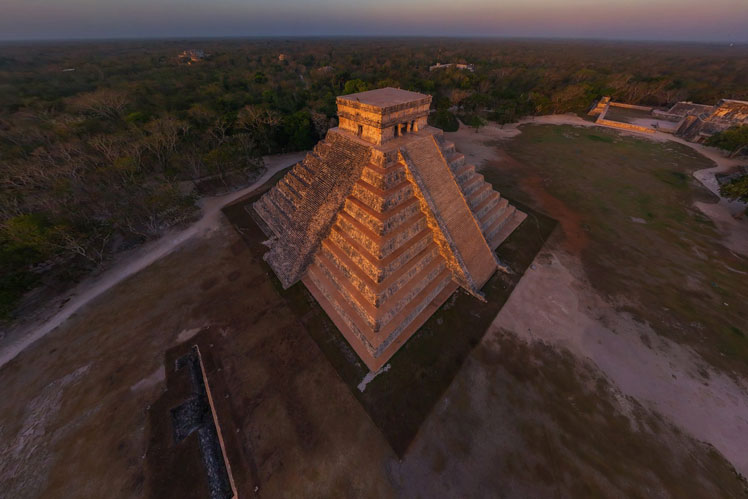
Presumably, the city of Chichen Itza was founded in the 30th century AD – during the heyday of the Mayan culture. Here, in honor of Kukulkan, the supreme god of wind and rain, the “founder” of royal dynasties and large cities, a 30-meter pyramid “Temple of Kukulkan” was erected (out of 24 meters in height, 6 is a pyramid, and 55 is a temple on its top). The length of each side of the structure is 9 meters, and each side of the temple has XNUMX steps.
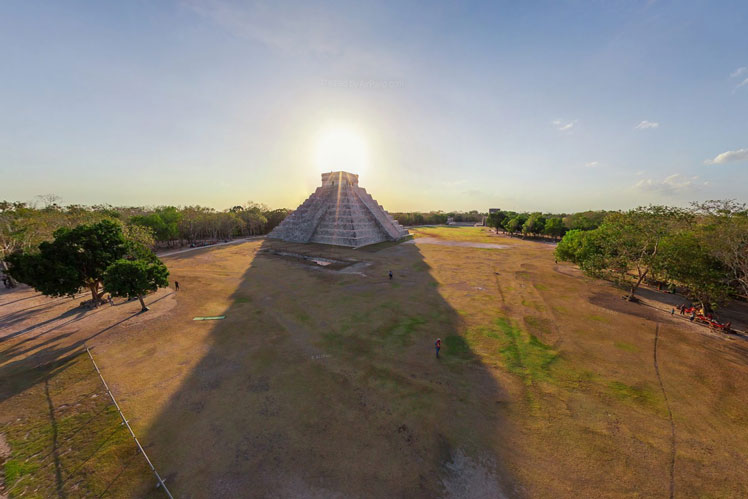
This is a masterpiece not only of architecture, but also of astronomy. Each of its four stairs has 91 steps, and their total number is 364. Together with the base-platform at the top of the pyramid, which unites all four stairs, the number "365" is obtained – the number of days in the solar year. The number of sections on each side of the temple is also symbolic: 9 steps of the pyramid are cut in two by a staircase, which corresponds to the number of months in the Mayan calendar year (18). And 52 stone reliefs on each wall of the sanctuary symbolize one calendar cycle, including 52 years. At the top of the pyramid is a small temple with four entrances where sacrifices were made.
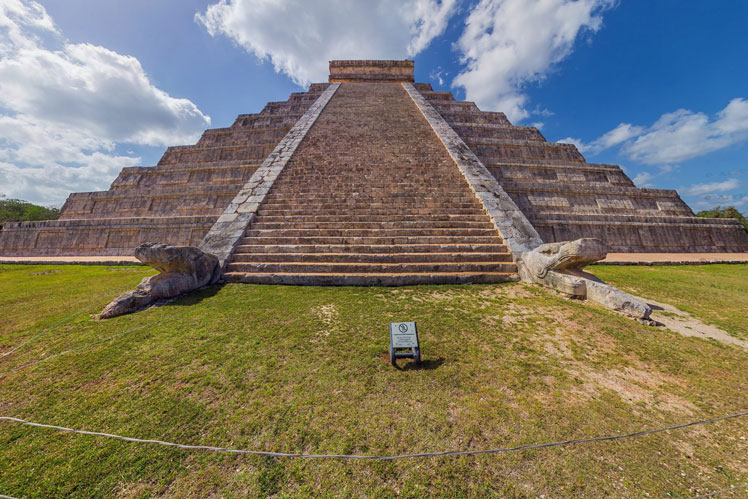
The Maya represented Kukulkan as a feathered serpent with a human head, so every year on the days of the autumn and spring equinoxes in the temple dedicated to this deity, you can see the “Feathered Serpent” with your own eyes – on March 20 and September 22 at about three o'clock in the afternoon, the sun's rays illuminate the western balustrade of the main staircase in such a way that light and shadow form an optical illusion: a 37-meter snake, "creeping" as the sun moves to its own head, carved at the base of the stairs. This unique natural and architectural "show" annually gathers thousands of spectators and makes Chichen Itza the most famous attraction in Mexico and around the world.
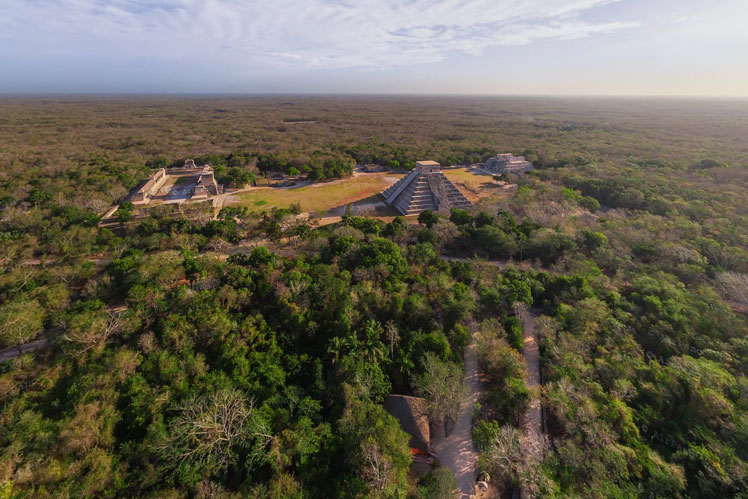
In addition to the “Temple of Kukulkan”, Chichen Itza has preserved 7 “stadiums” for playing ball, a giant rectangle from the remains of colonnades, a sacred well and many other interesting objects. The ancient city is recognized by UNESCO as a world cultural heritage site, and in 2007 it was also included in the list New seven wonders of the world Panoramas AirPano will help you to get acquainted with this miracle.
Mayan pyramids, Chichen Itza, Mexico
Source: airpano.com
We also recommend:
◆Lost City of Machu Picchu | 360º view



